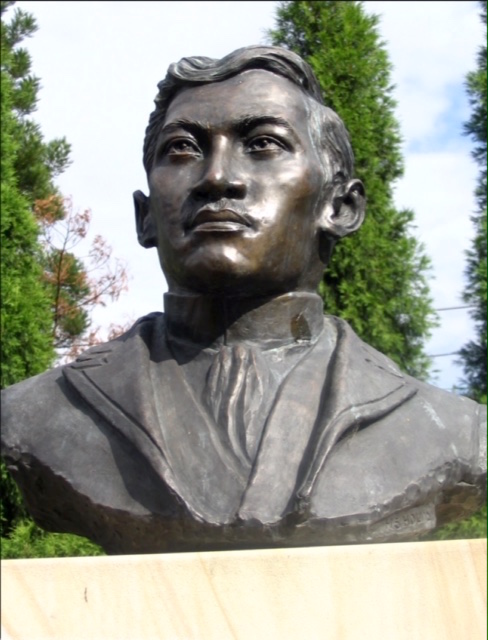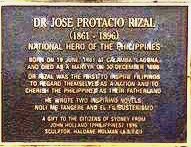Rizal Day is celebrated by Filipinos on the 30th of December, marking the day in 1896 when the Philippine national hero was martyred by Spanish executioners in Bagumbayan (now Rizal Park) in Manila. Rizal Day was first commemorated in 1898 as a national day of mourning for Rizal and all victims of the Spanish colonial rule of the Philippines. In 1902, December 30th became a legal public holiday, after Dr Jose Rizal was officially declared national hero.
Rizal Day ceremonies are held the Luneta in Manila, usually early in the morning, led by the President of the Philippines, with the raising of the national flag and the laying of a wreath at the foot of the Rizal Monument. Historically, the Philippine president also usually delivers his year-end address to be broadcast on this day.
Rites are also held all over the country, presided the chief executive of a province, city or town. This involves a flag-raising ceremony at the local Rizal shrine.
The first official Rizal monument was built by the Bicolanos in Daet, Camarines Norte in 1899.
In Australia, commemorative landmarks honouring the legacy of Dr Jose Rizal have been established. The 5-meter sculpture at Rizal Park in Campbelltown City in NSW in 2013. A street was also named in Campbelltown in honor of Rizal. Another Rizal statue stands in Ashfield Park NSW. There is a Rizal Park in Rooty Hill Blacktown NSW and another one in Ballarat Victoria.
Featured here is the remarkable Rizal sculpture found at the Plaza Ibero-Americana at the Sydney Central Station.

Artwork Description. The large bronze bust of Dr Jose Protacio Rizal occupies the entire base of a striated sandstone plinth.
It is one of 11 busts of famous Latin American heroes on display in Plaza Iberoamericana commemorating the contribution of Spanish and Portu- guese speaking people to the history of Australia.
Subject. Dr Jose Protacio Mercado Rizal y Alonzo Realonda (1861 – 1896) is the national hero of the Philippines, where the anniversary of his death, December 30 is a holiday. He was a poet and multilinguist as well as an amateur architect, artist, educator, amateur economist, amateur ethnologist, scientific farmer, historian, inventor, journalist, mythologist, inter- nationalist, naturalist, novelist, ophthalmologist, physician, propagandist, sculptor, and amateur sociologist.
Rizal advocated reform by peaceful means rather than by violent revo- lution. In this sense, he was Asia’s first modern nonviolent proponent of political reforms, and a forerunner of Gandhi. He helped create a new climate of thought throughout Asia, leading to the attrition of colonialism and the emergence of new Asiatic nations by the end of World War II.
The colonial authorities in the Philippines did not favor these reforms, even if they were more openly endorsed by Spanish intellectuals like Morayta, Unamumo, Pi and Margal. Upon his return to Manila in 1892, Rizal formed a civic movement called La Liga Filipina. This league advocated these moderate social reforms through legal means, but was disbanded by the governor. At that time he had already been declared an enemy of the state by the Spanish authorities because of his incendiary novels.
Information Source: cityartsydney.com.au

DR JOSE PROTACIO RIZAL 1861 – 1986 NATIONAL HERO OF THE PHILIPPINES
BORN ON 19 JUNE, 1861 AT CALAMBA, LAGUNA AND DIED AS A MARTYR ON 30 DECEMBER 1896. DR RIZAL WAS THE FIRST TO INSPIRE FILIPINOS TO REGARD THEMSELVES AS A NATION AND TO CHERISH THE PHILIPPINES AS THEIR FATHERLAND. HE WROTE TWO INSPIRING NOVELS, NOLI ME TANGERE AND EL FILIBUSTERISMO. A GIFT TO THE CITIZENS OF SYDNEY FROM JOHN HOLLAND (PHILIPPINES) 1995
SCULPTOR: HALDANE HOLMAN (A.S.T.C

